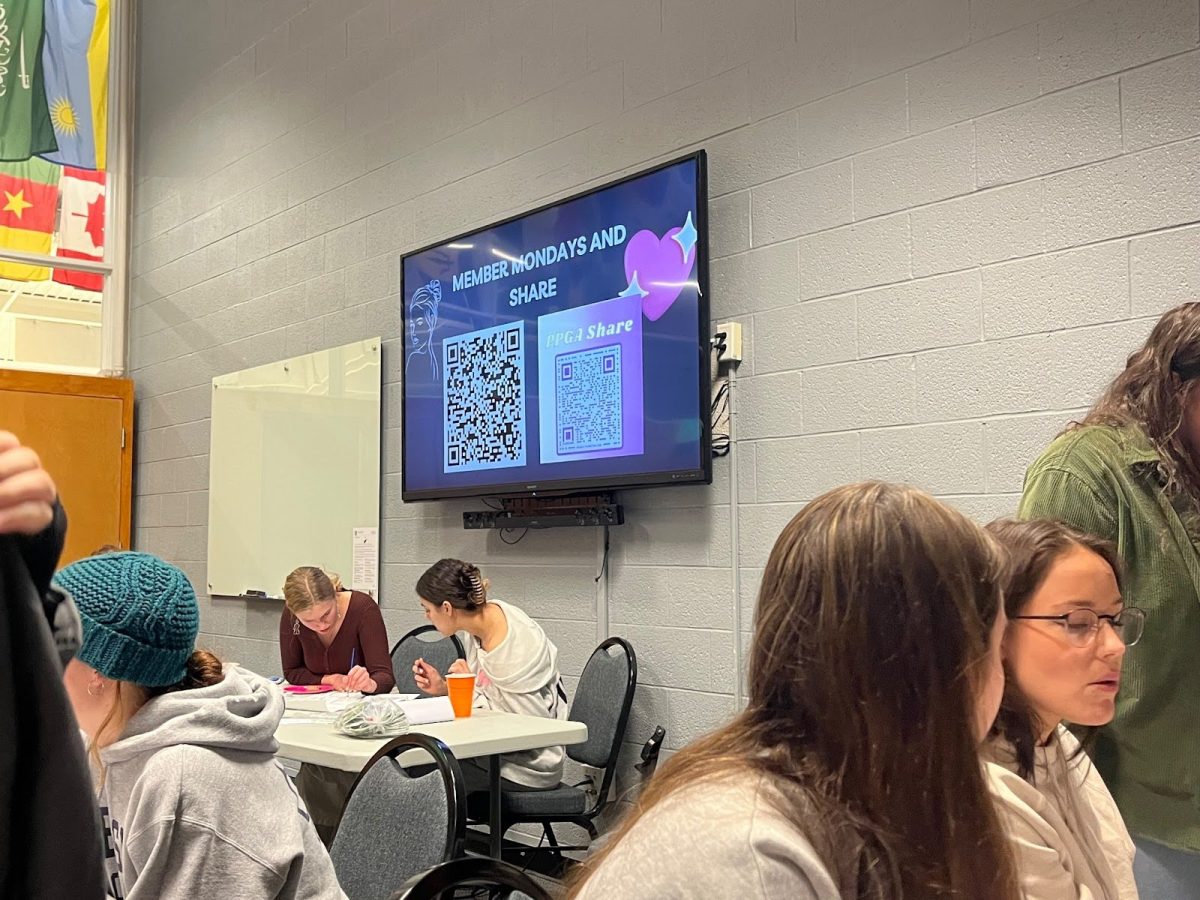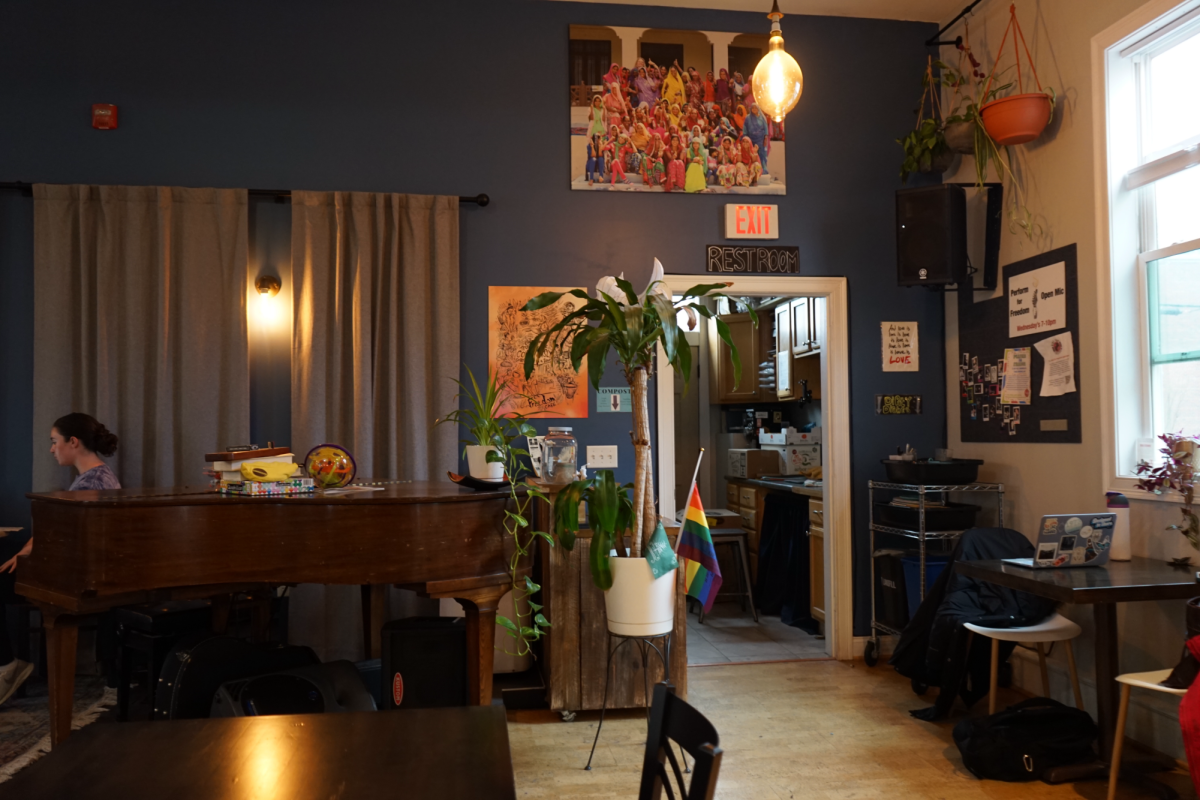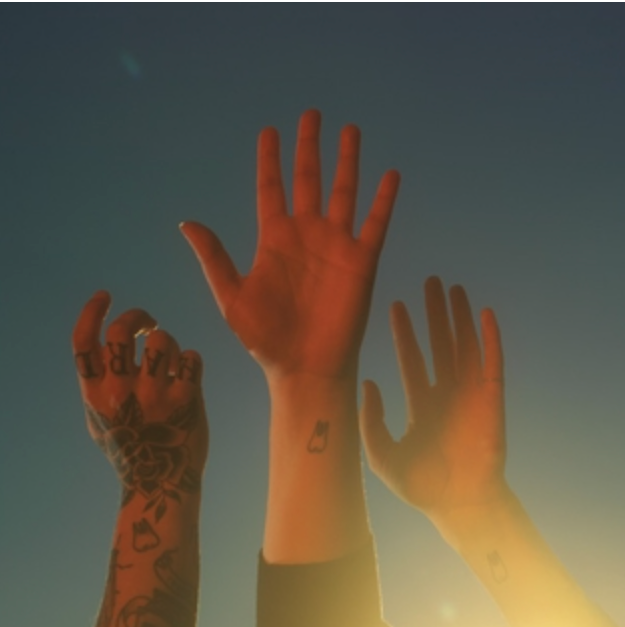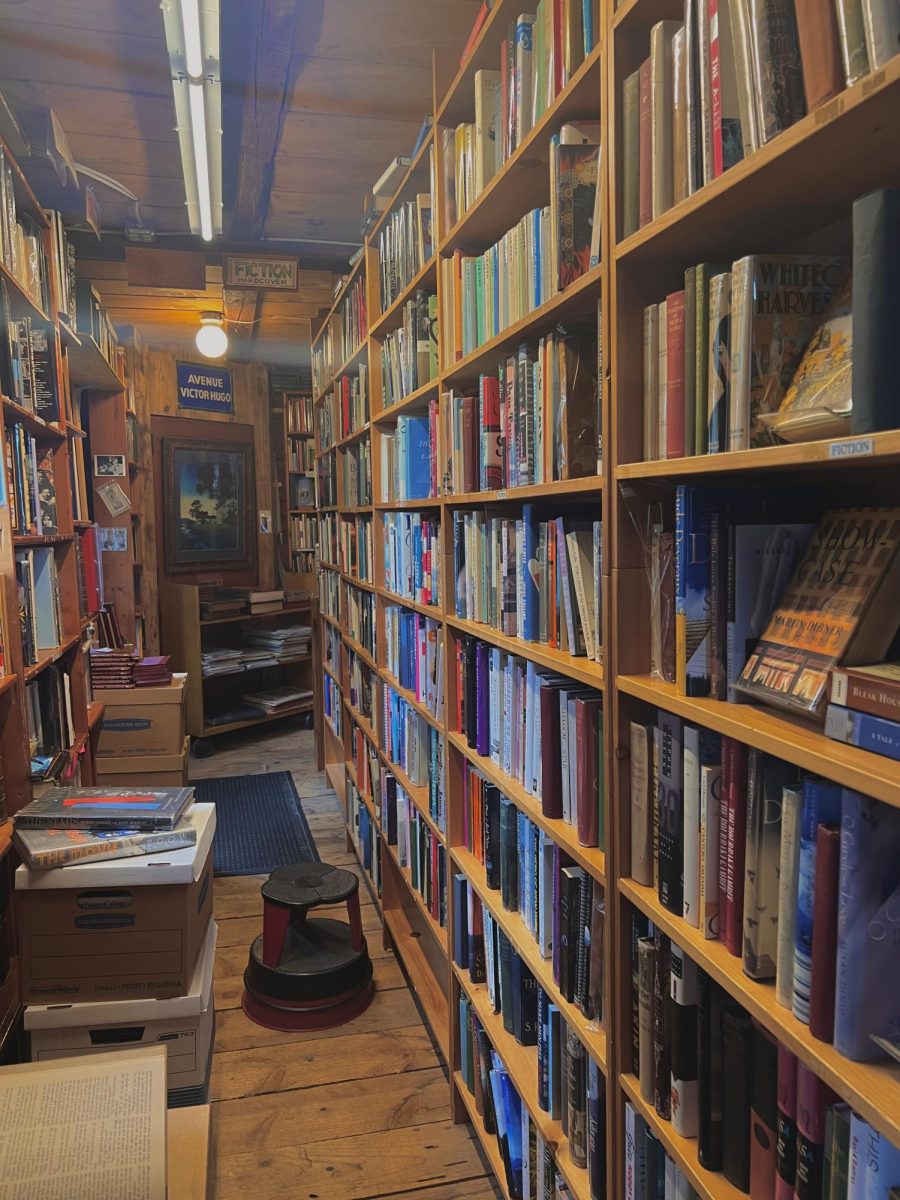By Olivia Marple, Contributing Writer

Chapin’s project is composed of scenic paintings from each state.
When one of the tires on Jane Chapin’s weary RV finally went flat in the middle of Sparks, Nevada, she did not see it as a setback but rather as an opportunity to go exploring. Chapin, whose ultimate goal was to paint a landscape in every state in America, was traveling from California through Nevada in the hopes of cruising down Route 50, a stretch of pavement known as “The Loneliest Road in America.”
While her husband and travel-mate, Roger, went to find a mechanic to fix the wounded recreational vehicle, Chapin lugged her painting supplies around town, searching for the scene that would serve as her next inspiration. Chapin found that scene tucked away on a side street accented with overgrowth. Framed by the rays of a golden Nevada sun, a pale pink, old-fashioned Volkswagen Beetle sat there waiting for her upon a patch of yellow grass. The perfect lighting and beautiful color made Chapin certain that this was her inspiration.
The painting she created that day in Nevada of the Volkswagen is one of the 50 paintings she produced during her three year cross-country trek, and these paintings make up Chapin’s current exhibit at the Discover Portsmouth Center in downtown Portsmouth, New Hampshire. The exhibit, which is entitled “Land of the Free” and features one painting from each state, will be open to the public until Monday, Dec. 22 and will raise money and awareness for two nonprofit organizations that offer assistance to servicemen and women and their families, the Special Operations Warrior Foundation and Pease Greeters.
Chapin wanted to show her gratitude for those who serve our country in the military through her art, and to help achieve this goal she created a book also entitled Land of the Free, which features her paintings from each state as well as stories of different veterans from each state. All funds from the sale of her book will go to these two nonprofit organizations, and the money raised from this exhibit will help to support her book project.
The Discover Portsmouth Center held a reception for the exhibit on Wednesday, Oct. 22, at which community members could meet and talk with Chapin.
“I came because I wanted to understand the artist and what motivated her to do this,” said Barbara Trimble, a community member who attended the reception. “I think the whole connection to her honoring a veteran from every state is very original and very inspiring.”
On the wall where all 50 of the various landscapes hung in a patchwork of squares and rectangles framed in black, Chapin’s reasoning for doing this project was inscribed in her own words: “The realization of my freedom on the road reawakened me to the debt I owed our veterans, past and present. I began thinking of the paintings as symbols of the land they had fought to defend.”
When Chapin first began her journey in 2007, she no idea it would take her across all 50 states and that it would evolve into an homage to veterans and current servicemen and women.
“By the time I got to Vermont, I started to get the idea that there was more to this thing than just arbitrarily traveling around and painting,” Chapin said at the reception on Wednesday. “I was finding so many surprises and so many neat little things about the country that I thought, ‘I really want to do all 50 states’ because I knew so little about most of them.”
Chapin started her journey in Maine, and after going through New Hampshire and Vermont and discovering what she wanted her project to become, she spent the next three years going on five different major trips along with a few “pinpoint visits” to cover every last state. Her journey culminated in 2010 in Hawaii.
The one state she had visited and painted outside this time period was Alaska, to which she had journeyed with her father five years before the start of her project.
Chapin’s own father was a veteran, and at the reception she wore the B5 pin he had received during World War II.
“My dad is here tonight,” Chapin said when addressing the community members present that night. Her fingers gently brushed the pin on her chest.
Chapin’s father inspired in her a love of storytelling.
“When I was a kid my dad used to tell us stories about my ancestors and my family,” Chapin said during her speech. “Sometimes we paid attention and sometimes we didn’t, and, by the time we realized how important those stories were, we had forgotten them and, boy, we wished we had written them down.”
This realization has stayed with her as she continually tries to tell stories through her art, as she does through the paintings that make up Land of the Free.
“For me, art is about storytelling and communication, so what I try to communicate when I paint is an emotion, a feeling, and a connection of some kind,” Chapin said. “If I’m not connected with what I’m painting, it’s going to show on the finished work. So I hope that when people look at my work, they’ll also make a connection to, in this case, a place where they’ve been or where they’d like to be.”
Liv Rubin, another community member at the reception, enjoyed Chapin’s work especially because of this storytelling piece both in her book and in the paintings themselves.
“It’s just so nice that she connected it with the veterans,” Rubin said. “To pair the stories with the paintings is such a neat thing, and I mean each painting is sort of a story anyway.”
Such stories can certainly be seen in the tribulations behind Chapin’s VW Beetle painting for Nevada or in the two people walking down the esplanade in the Louisiana painting. (“When I do people in a painting like that, they end up being composites,” Chapin said. “So people will walk by and you’ll get one stroke, so you might get somebody’s head and somebody else’s body.”)
Chapin also pointed out that the motto of the Discover Portsmouth Center, which is operated by the Portsmouth Historical Society, is “we tell Portsmouth stories,” which she believes works well with her own storytelling in this exhibit.
Maryellen Burke, Executive Director of the Discover Portsmouth Center, agrees, and although Portsmouth is not featured in the New Hampshire painting, Burke said the connection to veterans found in Chapin’s project does indeed relate to Portsmouth’s own history.
“Our long history in Portsmouth is very connected to the military,” Burke said. “The [Portsmouth Naval] Shipyard is one of the oldest in the country. [The Portsmouth Historical Society] operates the John Paul Jones House, the father of the American Navy. And our 20th century history is all about Pease Air Base and the Shipyard.”
More specifically, Chapin’s work connects to Portsmouth in that part of the proceeds will go to Pease Greeters, which welcomes back servicemen and women coming home from Iraq and Afghanistan through Pease International Airport in Portsmouth.
Their website boasts that they have “met well over 600 flights and have welcomed over 170,000 troops since 2005.” The other organization, the Special Operations Warrior Foundation, helps servicemen and women across the country, and its website describes it as being “a top-rated nonprofit organization that supports the military’s Special Operations Forces and their families through three programs,” which include college scholarships, family counseling, and grants.
Chapin decided to tell a story about service members and veterans like the ones these organizations hope to help and although she doesn’t consider herself a historian, she wrote these “tidbits” of history on each page of her book to “wet somebody’s appetite a little bit so that they would go and read further.”
“What I learned in doing this book is that our history as a country is pretty complex,” Chapin said. “It’s full of heroes and villains and saints and scoundrels and well-intentioned fools and people who were a combination of all those things. And while villains and scoundrels might be interesting to write about, I prefer to write about heroes.”
In her book, the histories of these heroes mix together with the histories of each place she encountered on her journey, and her one piece of advice for other travelers is that they get off the beaten path in order to make discoveries of their own.
“No matter where you go in this country, if you’re traveling, get off the interstates, get on the back roads,” Chapin said. “And no matter where you are, there’s probably a bit of history just around the corner and there’s probably an extraordinary person just down the road. On my trip, I learned how to slow down, because there are a lot of things in the rearview mirror.”




















